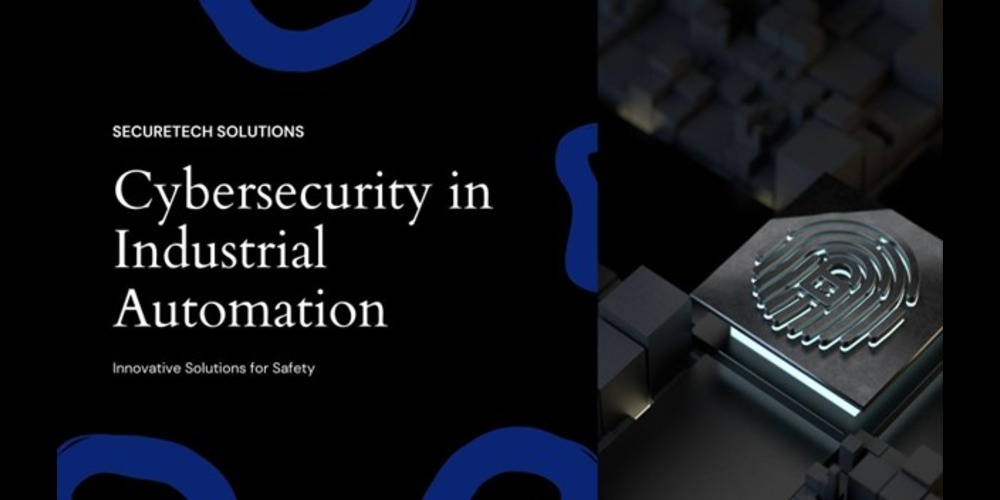Innovations in Cybersecurity: Safeguarding Industrial Automation

The integration of advanced technologies in industrial automation has revolutionized manufacturing, boosting efficiency, productivity, and innovation. However, this connectivity exposes systems to various cyber threats. Vishvesh H. Khisty’s article overviews these challenges and the innovative strategies being implemented. Specifically, industrial automation, driven by IoT, cloud computing, and interconnected networks, enables real-time monitoring and control. Consequently, it also increases vulnerability to cyberattacks, with 41.2% of industrial control systems targeted in late 2020.
The Impact of Cyber Attacks
The consequences of cyber-attacks on industrial automation systems can be severe and far-reaching. Operational disruptions caused by cyber incidents can lead to production downtime, equipment damage, and supply chain interruptions. For instance, the NotPetya ransomware attack in 2017 impacted several industrial organizations, including pharmaceutical giant Merck, resulting in a production shutdown lasting weeks and financial losses exceeding $310 million. Another major concern is data breaches, as cybercriminals may obtain sensitive industrial information like intellectual property, trade secrets, and customer data. The 2021 Verizon Data Breach Investigations Report revealed a 156% increase in data breaches in the manufacturing industry compared to the previous year.
Innovations in Cybersecurity Strategies
To address growing cybersecurity challenges, industrial organizations must prioritize robust measures:
Risk assessments: Comprehensive risk assessments are essential for identifying and prioritizing vulnerabilities. The ISA/IEC 62443 standard provides a framework for managing cybersecurity risks in industrial settings. According to a Ponemon Institute study, organizations that regularly conduct risk assessments experience 29% fewer data breaches than those that do not. This highlights the importance of systematic evaluations in maintaining robust industrial cybersecurity.
Defense-in-depth approach: This strategy involves deploying various security controls at different levels of the system architecture, including network segmentation, firewalls, intrusion detection systems (IDS), and endpoint protection. The NIST SP 800-82 guide recommends this approach for ICS security. Multiple defense layers enable organizations to prevent, detect, and respond to cyber attacks more effectively. For instance, network segmentation can isolate critical assets and limit malware spread, while firewalls control traffic flow and block unauthorized access.
Access control: Strict access control measures are essential for protecting sensitive assets from unauthorized access and reducing insider threats. Role-based access control (RBAC) and the principle of least privilege are key strategies. The IEC 62443-3-3 standard provides guidelines for implementing access control in industrial automation systems, including defining user roles, implementing strong authentication, and regularly reviewing access rights. The SANS Institute found that organizations implementing RBAC experience 50% fewer security incidents.
Encryption protocols: Robust encryption protocols are vital for safeguarding sensitive data. Encryption ensures confidentiality and integrity, preventing unauthorized access and tampering. The ISA/IEC 62443-3-3 standard specifies security requirements for encryption in industrial systems, recommending strong algorithms like AES and secure communication protocols like TLS.
Continuous monitoring: Continuous monitoring solutions detect and respond to cyber threats in real-time. Tools and analytics provide visibility into industrial networks, identifying anomalous activities and mitigating incidents promptly. The DHS CISA provides guidelines for ICS security, including deploying IDS, SIEM solutions, and network monitoring tools. Aberdeen Group found organizations with continuous monitoring capabilities experience 50% fewer security incidents and 40% faster response times.
Employee training: Comprehensive training programs raise awareness about common cyber threats and best practices. Human error is a significant risk factor; educating employees can mitigate this risk. IBM found human error accounts for 95% of cybersecurity incidents. Training should cover password security, social engineering, phishing awareness, and incident reporting. The ISA/IEC 62443-2-1 standard guides establishing a cybersecurity training program for industrial systems.
These measures collectively enhance the resilience of industrial automation systems against evolving cyber threats.
In conclusion, the rising sophistication and frequency of cyberattacks targeting industrial automation systems underscore the urgent need for organizations to prioritize cybersecurity. Adopting a proactive and comprehensive approach can mitigate risks, detect and respond to threats, and ensure operational continuity. Implementing robust security controls, conducting regular risk assessments, and providing employee training are key strategies to enhance resilience against evolving cyber threats. By doing so, industrial organizations can safeguard their systems, protect critical infrastructure, and maintain productivity and innovation in an increasingly connected world. Ensuring strong cybersecurity measures is essential for the future of industrial automation.
Read More From Techbullion And Businesnewswire.com





